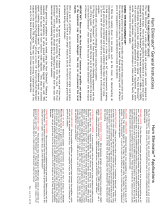
4
DJdi DIRECT BOX
Using a Direct Box
First, a direct box converts the audio signal originating from an unbalanced device (like a guitar) to a balanced audio signal for
transmission over a longer distance than is recommended for an unbalanced signal to travel. As audio industry people know,
the advantage of a balanced signal is realized at the receiving end (audio input) of the balanced cable, typically in the form of a
mic pre-amp input on a mixing console. The mic pre input circuitry consists of a “differential amplifier” whose job it is to
“accept” the audio portion of input signal and “reject” the noise portion of the signal. The noise portion happens to be roughly
equivalent on (or “common to”) both the “+” and “-” balanced conductors in the mic cable, since external electromagnetic fields
are induced onto both conductors in a roughly similar fashion. Since the conductors are always in a “twisted pair” configuration,
they “see” the same noise field. Thus, this is known as “common-mode noise”. Another type of common-mode noise somewhat
evenly-induced onto both conductors is due to the inherent physics of connecting two pieces of equipment together and the
resulting flow of electrons due to noise voltages present at each piece of equipment. The ability of a balanced input to reject
common-mode noise is measured in dB and called its “common-mode rejection ratio”, or CMRR.
The second function of a direct box is to convert from a high-impedance output – on an instrument such as electric guitar with
passive pickups, for instance – to a low-impedance output. A cable driven by a high-impedance output is more susceptible
to signal loss and noise pickup than a cable driven by a low-impedance output. Thus, using a direct box again improves, for a
different
reason, the ability to run longer distances due to the impedance conversion from high to low-impedance.
Third, at the heart of the direct box is an isolation transformer that allows complete “galvanic” isolation, if desired, between the
equipment plugged into either end. This eliminates the hum and buzz present in the system due to ground loops.
Operating the DJdi
The DJdi offers a variety of DI solutions for live sound and recording applications. You can connect all kinds of audio signals
like guitars, keyboards, outboard signal processors and even the high-powered speaker output from an amplifier. The DJdi is
also very useful for connecting unbalanced signals from sources like DJ equipment and sub-mixers, effects processors and
keyboards to a main PA or recording mixer. While the DJdi’s balanced outputs provide a clean signal at a low level so long runs
of cable are possible.
Direct Insertion of an Instrument into a PA System
One of the most common applications for using a DI box is getting the signal from a bass guitar into the PA system. Simply
put, the low frequencies produced by bass are difficult to mic, so use of a DI box is almost always preferable.
Additionally, the signal going to the PA system can be adjusted by the FOH (front of house) engineer without affecting
the sound the musician dial up on stage. You can use the DJdi to plug a guitar directly into the PA system as well. This is
especially useful for acoustic guitars with pickups or when using guitar signal processors. Follow these steps to connect a
guitar to a PA mixer:
1. Mute or turn down the volume/gain on you mixer before making connections
2. Connect the output of the guitar or bass to the 1/4” input on the DJdi
3. Connect the DJdi’s XLR output to the input of the PA mixer
4. Adjust the mixer’s volume/gain to your liking










